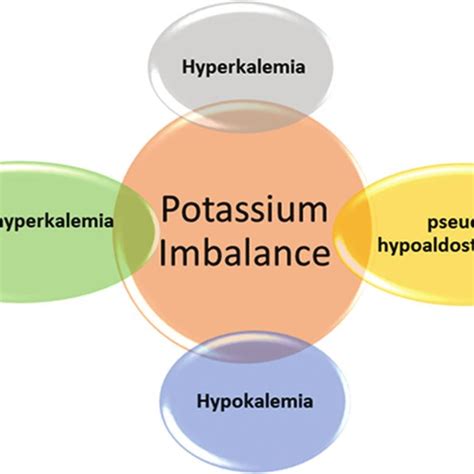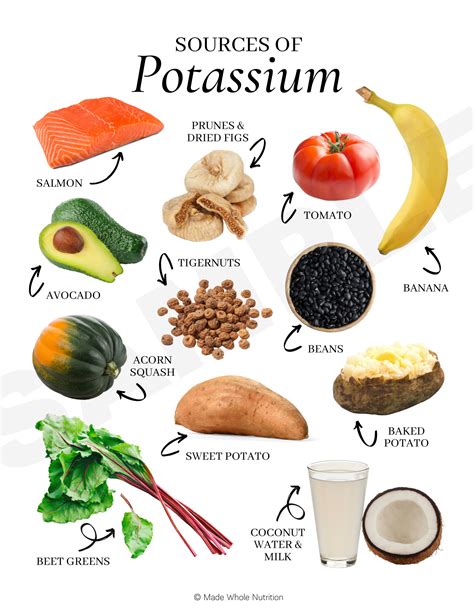Intro
Discover the normal potassium range and its significance in maintaining healthy blood levels, preventing hyperkalemia and hypokalemia, and understanding potassiums role in muscle function and heart health.
Maintaining the right balance of electrolytes in the body is crucial for overall health, and potassium is one of the most important electrolytes. It plays a vital role in various bodily functions, including muscle contractions, nerve impulses, and heart function. The normal potassium range is a topic of interest for many, as both high and low levels of potassium can lead to serious health issues. In this article, we will delve into the world of potassium, exploring its importance, the normal range, and what happens when levels deviate from the norm.
Potassium is an essential mineral that helps maintain fluid balance, regulates blood pressure, and supports healthy muscle and nerve function. It is found in many foods, including fruits, vegetables, whole grains, and lean proteins. The body tightly regulates potassium levels, and any imbalance can have significant consequences. For instance, low potassium levels, also known as hypokalemia, can lead to muscle weakness, fatigue, and heart arrhythmias, while high potassium levels, or hyperkalemia, can cause cardiac arrest, muscle paralysis, and respiratory failure.
Understanding the normal potassium range is vital for individuals who want to maintain optimal health. The normal range for potassium levels in the blood is typically between 3.5 and 5.0 milliequivalents per liter (mEq/L). However, it's essential to note that these values can vary slightly depending on the laboratory and the individual's overall health. Factors such as age, sex, and certain medical conditions can influence potassium levels, making it crucial to consult with a healthcare professional for personalized guidance.
Importance of Potassium

Functions of Potassium
Some of the key functions of potassium include: * Regulating fluid balance and blood pressure * Supporting healthy muscle and nerve function * Maintaining a stable heart rhythm * Aiding in the transmission of nerve impulses * Helping to regulate the body's acid-base balanceCauses of Potassium Imbalance

Symptoms of Potassium Imbalance
The symptoms of potassium imbalance can vary depending on the severity and duration of the condition. Some common symptoms include: * Muscle weakness or cramps * Fatigue or lethargy * Heart palpitations or arrhythmias * Numbness or tingling sensations * Respiratory difficultiesNormal Potassium Range in Different Age Groups

Potassium Levels in Different Medical Conditions
Potassium levels can be affected by various medical conditions, including: * Kidney disease: Hyperkalemia or hypokalemia * Heart failure: Hyperkalemia or hypokalemia * Diabetes: Hypokalemia * Hormonal imbalances: Hyperkalemia or hypokalemiaDietary Sources of Potassium

Tips for Maintaining Healthy Potassium Levels
To maintain healthy potassium levels, follow these tips: * Eat a balanced diet rich in potassium-rich foods * Stay hydrated by drinking plenty of water * Limit sodium intake to reduce blood pressure * Avoid excessive sweating or dehydration * Consult with a healthcare professional for personalized guidanceConclusion and Next Steps

We invite you to share your thoughts and experiences with potassium imbalance in the comments section below. Have you or a loved one experienced potassium imbalance? What steps did you take to address the issue? Share your story and help others understand the importance of maintaining healthy potassium levels.
What are the symptoms of low potassium levels?
+Symptoms of low potassium levels (hypokalemia) include muscle weakness, fatigue, heart palpitations, and numbness or tingling sensations.
How can I increase my potassium levels naturally?
+You can increase your potassium levels naturally by eating a balanced diet rich in potassium-rich foods, such as fruits, vegetables, whole grains, and lean proteins.
What are the risks of high potassium levels?
+High potassium levels (hyperkalemia) can lead to cardiac arrest, muscle paralysis, and respiratory failure. If left untreated, hyperkalemia can be life-threatening.
